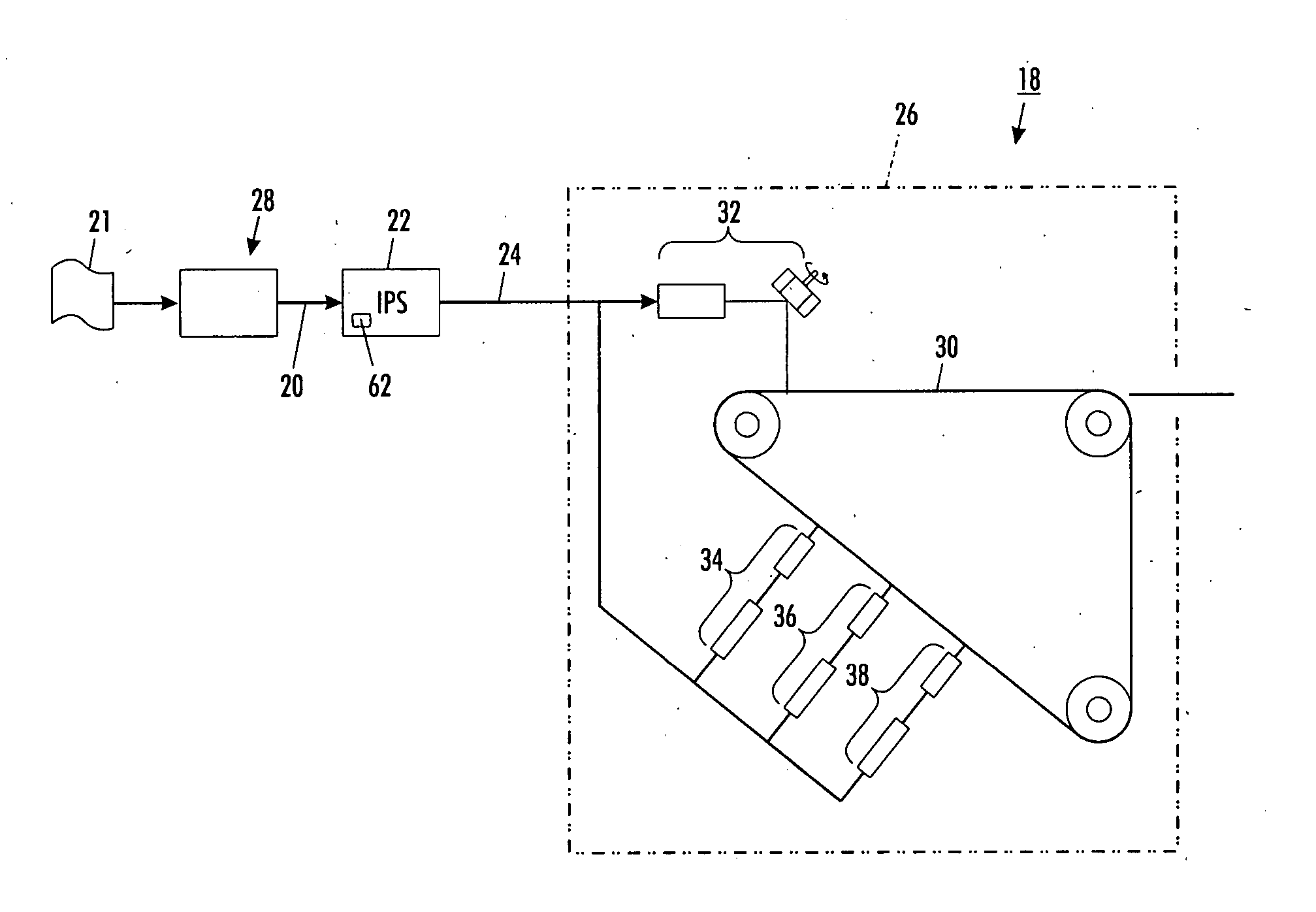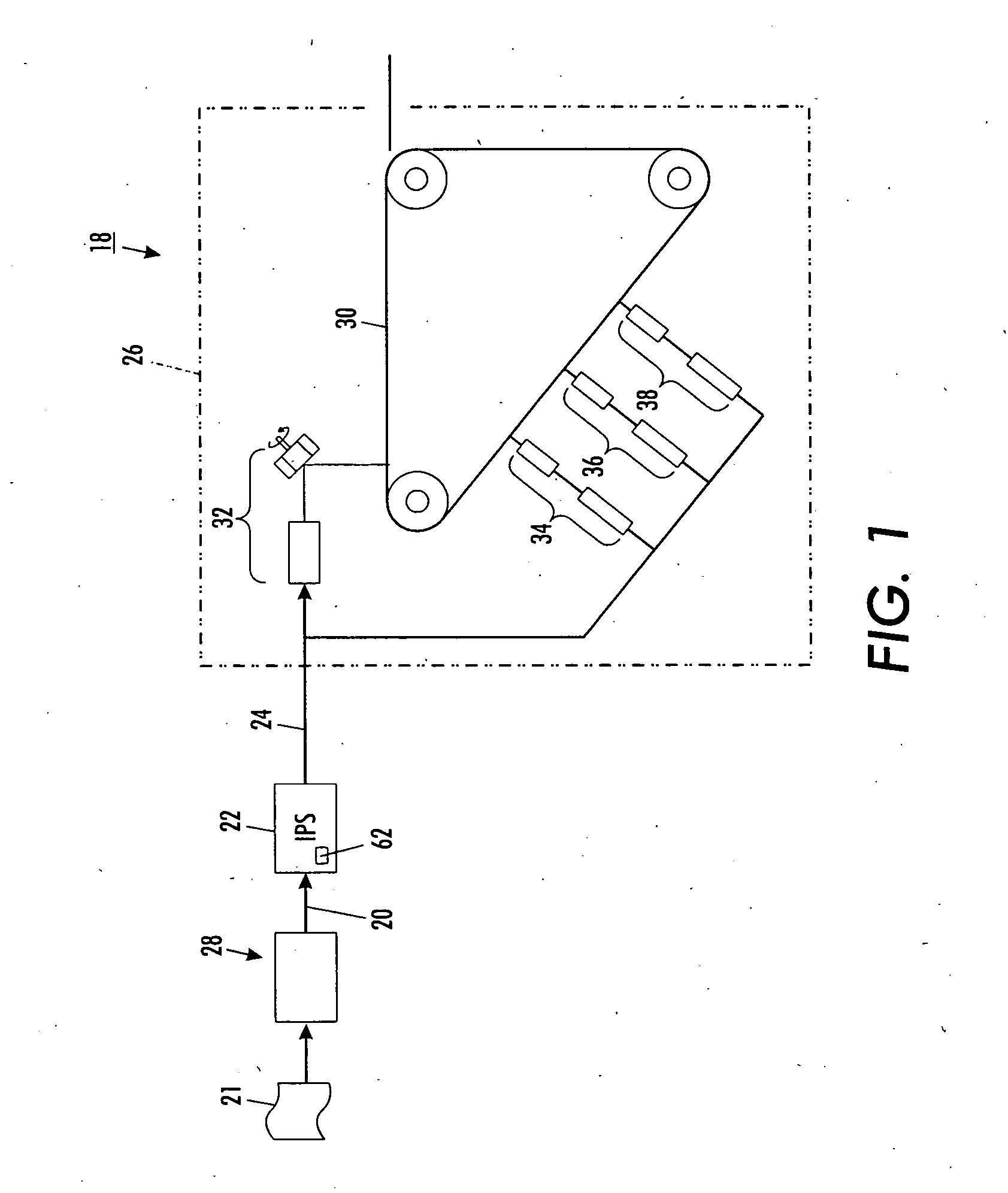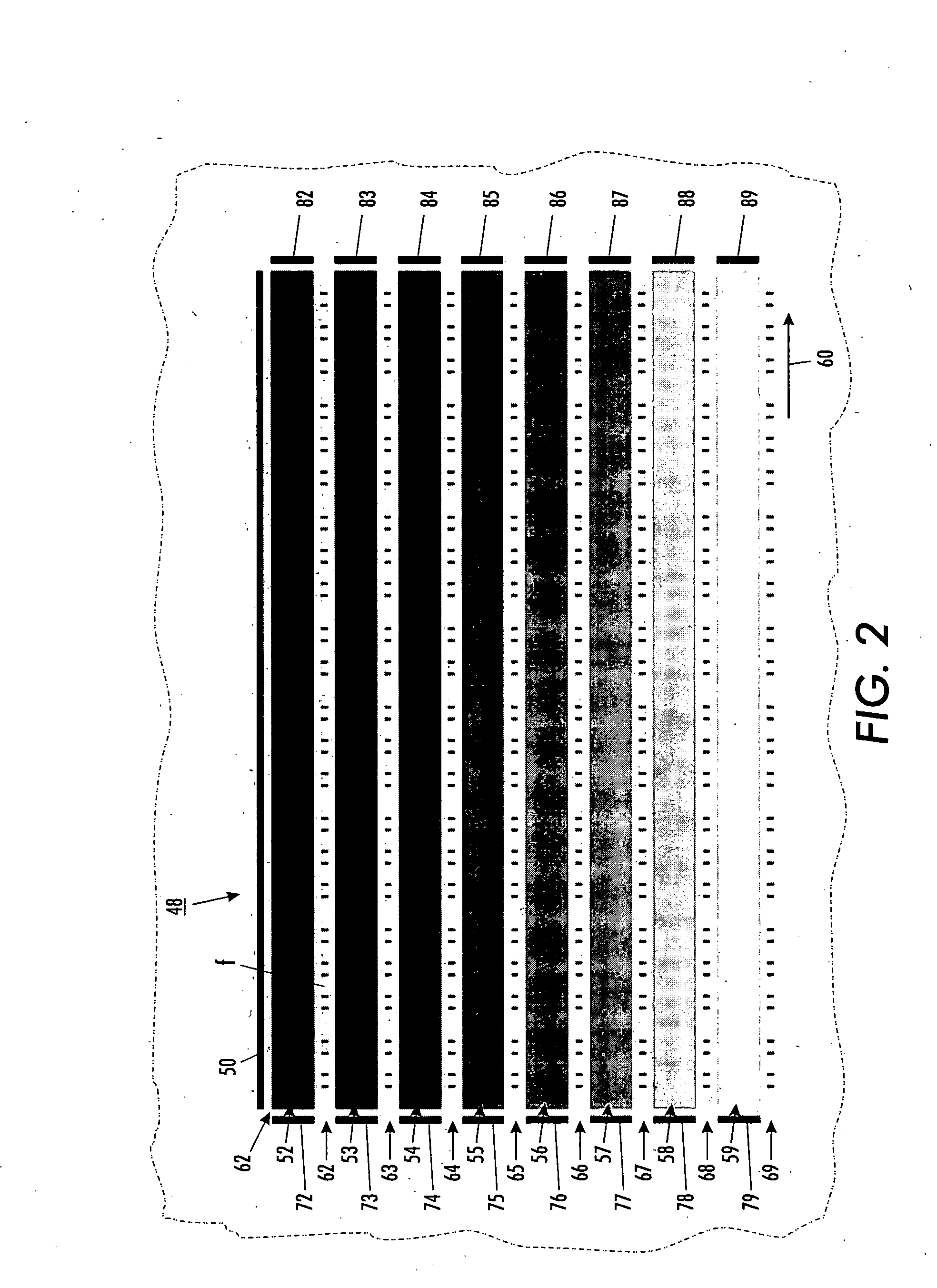Systems and methods for measuring uniformity in images
a technology of uniformity and image, applied in the field of systems and methods for measuring uniformity in images, can solve problems such as non-uniformity level errors, visual objectionable banding in halftone outputs, and errors typically arise in raster scan image output terminals (iots)
- Summary
- Abstract
- Description
- Claims
- Application Information
AI Technical Summary
Benefits of technology
Problems solved by technology
Method used
Image
Examples
Embodiment Construction
[0033] While the method to process scanned images for uniformity will hereinafter be described in connection with exemplary embodiments, it will be understood that it is not intended to limit the embodiments. On the contrary, it is intended to cover all alternatives, modifications and equivalents as may be included within the spirit and scope of the embodiments as defined by the appended claims.
[0034] Turning now to FIG. 1, there is shown an embodiment of a digital imaging system 18 that incorporates the features of the exemplary embodiments. Image data 20 representing an image 21 to be printed is received by an image processing system (IPS) 22 that may incorporate what is known in the art as a digital front end (DFE). The IPS 22 processes the received image data 20 to produce print ready data 24 that is supplied to an output device 26 (e.g., a print engine). It is to be understood that the output device 26 may be a color xerographic printer. The IPS 22 may receive image data 20 fr...
PUM
 Login to View More
Login to View More Abstract
Description
Claims
Application Information
 Login to View More
Login to View More - R&D
- Intellectual Property
- Life Sciences
- Materials
- Tech Scout
- Unparalleled Data Quality
- Higher Quality Content
- 60% Fewer Hallucinations
Browse by: Latest US Patents, China's latest patents, Technical Efficacy Thesaurus, Application Domain, Technology Topic, Popular Technical Reports.
© 2025 PatSnap. All rights reserved.Legal|Privacy policy|Modern Slavery Act Transparency Statement|Sitemap|About US| Contact US: help@patsnap.com



